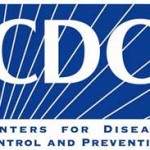The five-year trend in foodborne illness rates is, for the most part, progressing in the wrong direction, according to the Centers for Disease Control and Prevention’s (CDC) annual report on foodborne illness. Since 2007, incidence rates of Salmonella, Campylobacter, Listeria and all but one strain of Shiga Toxin Producing E.coli have increased. Only the incidence rate of E.coli 0157:H7 has decreased, according to the newly released data.
 Since 2007, the number of laboratory-confirmed infections from E.coli 0157:H7 has decreased 15.5 percent. But infections from other pathogens that account for the bulk of foodborne illnesses in the U.S. are on the rise. Since 2007, the number of laboratory-confirmed infections from: Campylobacter has increased 15 percent, Listeria has increased 14 percent, Salmonella has increased 14 percent and non-0157 STEC, a whopping 80 percent.
Since 2007, the number of laboratory-confirmed infections from E.coli 0157:H7 has decreased 15.5 percent. But infections from other pathogens that account for the bulk of foodborne illnesses in the U.S. are on the rise. Since 2007, the number of laboratory-confirmed infections from: Campylobacter has increased 15 percent, Listeria has increased 14 percent, Salmonella has increased 14 percent and non-0157 STEC, a whopping 80 percent.
“This data further emphasizes the need for FDA to implement the Food Safety Modernization Act, which was signed into law in January 2010 and shifts FDA’s food safety program from one of reaction to prevention. The FDA has proposed regulations to implement four major components of the law – produce safety, preventive controls for food and animal feed and import safety – yet the rules are now seven months overdue and have been delayed by the Obama Administration. The Administration should immediately release the rules so that FDA can move forward on implementation of the new law,” Chris Waldrop, Director of The Food Policy Institute said in a statement.
The data was collected by the CDC’s FoodNet, a network of 10 sites throughout the U.S. that works together to track incidence and trends of infection from foodborne pathogens. In 2011, FoodNet identified about 19,000 infections. Children under 5 and adults 65 and over continue to be at higher risk for foodborne illness than other segments of the population. Hospitalization rates by pathogen in 2011 were as follows: Campylobacter -15 percent, Listeria – 95 percent, Salmonella 28 perecnt, Non-0157 STEC 18 percent and 0157 STEC 43 perecnt. Adults over 65, were at the greatest risk for hospitalization.




